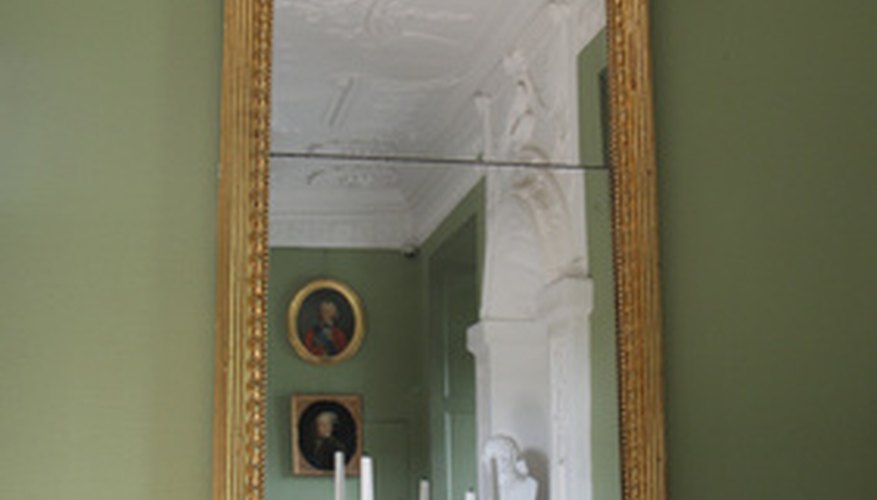A series of coatings on the backside is what gives the mirror its reflective finish. If this coating is scratched, that portion of the mirror atop the scratch will lose its reflective qualities.
- A series of coatings on the backside is what gives the mirror its reflective finish.
- If this coating is scratched, that portion of the mirror atop the scratch will lose its reflective qualities.
There are different options for repairing a scratch in the reflective coating on a mirror.
The simplest method is to tape a piece of aluminium foil over the scratch.
Mirror resilvering kits are available, but the results vary depending on the skill of the applicator. If your mirror is antique, or precious to you, your best bet is to have a professional fix the mirror.
Lay out a soft blanket or work on carpet.
Examine the mirror to determine the best way to remove the mirror glass from its frame. In certain types of mirrors the glass is held within the frame by pliable metal tabs, while in other styles the glass may be secured with screws.
- Examine the mirror to determine the best way to remove the mirror glass from its frame.
Disengage the mirror glass from the frame. Take great care not to further damage or break the mirror glass or the frame. Set the mirror glass face down on the blanket or carpet.
Examine the backside of the glass and locate the scratch in the mirror coating.
Cut a piece of smooth aluminium foil that will entirely cover the length and width of the scratched coating.
Set the foil in place, reflective side down, over the scratch. Tape the top edge of the foil down with a piece of clear scotch tape.
- Set the foil in place, reflective side down, over the scratch.
Burnish the foil with the rounded edge of a spoon. Smooth any wrinkles out of the foil.
Tape the remaining edges of the foil with clear scotch tape.
Turn the mirror over and examine the finished repair. If the mirror repair meets your expectations, return the mirror to its frame and fasten it in place. If the repair is unsatisfactory consider resilvering the mirror glass.
Obtain a mirror resilvering kit. These kits are commonly available at craft and some speciality hardware stores.
Carefully remove the mirror glass from the frame. Inspect the coated side of the glass for damage. If the glass itself is damaged, as opposed to just the coating, resilvering will not hide this damage, and in fact may highlight it. If the mirror glass is damaged, consider replacement.
Strip the backing paint from the mirror using paint stripper. Some resilvering kits come with the paint stripper included. You may need to buy paint stripper separately. Make sure that your paint stripper is suitable for removing paint from glass. Follow the paint stripper manufacturer's instructions.
- Obtain a mirror resilvering kit.
- Strip the backing paint from the mirror using paint stripper.
Use nitric acid to strip the silver coating from the backside of the mirror. Nitric acid should be included in your mirror resilvering kit. Follow the manufacturer's instructions regarding the proper use of this product.
- Use nitric acid to strip the silver coating from the backside of the mirror.
Clean the stripped glass thoroughly with deionised water and a clean, lint-free cloth. Make sure that the glass is dry, and completely free of any surface contamination.
Mix the chemicals that comprise the silver coating in the sprayer and use a specialised sprayer to apply the coating to the backside of the mirror glass. Let the silver coating dry according to the manufacturer's instructions.
Apply copper paint over the silver coating. Follow the instructions included in your resilvering kit regarding the proper application method for the copper paint. Let the copper paint dry.
Coat the backside of the mirror with a protective backing paint. Once this final coating is dry, the mirror is ready to reframe and hang.
TIP
For precious or antique mirrors, consider hiring a professional to resilver the scratched glass.
WARNING
Wear protective dust-free latex gloves and protective eyewear when working with glass and the various chemicals involved in mirror resilvering. Be aware that the value of antique mirrors can be compromised by altering the finish or resilvering.
